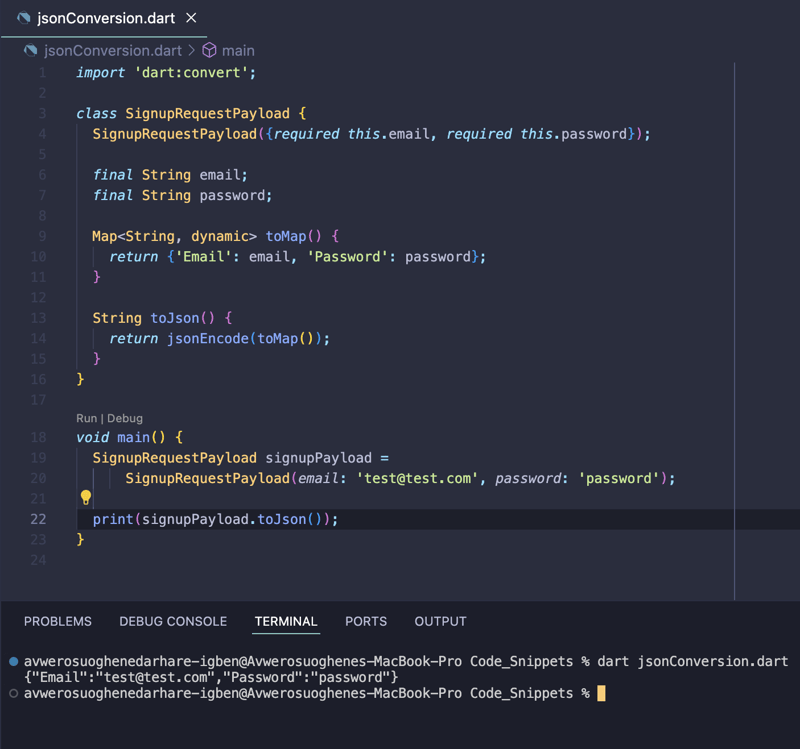JSON (JavaScript Object Notation) provides a lightweight and simple method of data interchange, widely used in modern systems, including application development in Dart. Its simplicity, support for nested data, and language independence make it a go-to option for transmitting information across different platforms and programming languages. It serves as a means of providing dynamic web experiences through its vital role in client and server-side communications, particularly in APIs. In short, it is a vital tool used by software engineers today for data exchange in Dart-based mobile app development. This article delves into how to utilize this simple yet powerful tool to enhance the functionality and efficiency of Dart-based software.
Converting Dart Objects to JSON
When creating Dart applications, it’s often necessary to transform Dart objects into JSON format to carry out tasks like transmitting data over networks or storing it in databases. Dart offers built-in support for such data transformation using the dart:convert library. This library provides utilities for serializing Dart objects into JSON and vice versa.
The serialization process involves converting Dart objects into JSON format. Dart provides a convenient way to do this using the jsonEncode() function from the dart:convert library. This function converts a Dart object into its JSON representation as a string.
The snippet above demonstrates the usage of the jsonEncode method to convert Dart data into JSON format. The SignupRequestPayload class includes a toJson method that converts the email and password Dart objects into JSON format, as evidenced by the output printed to the console.
Handling Different Data Types
When translating Dart objects into JSON, it’s important to handle different data types properly. Dart supports a range of data types including strings, numbers, booleans, lists, and maps, which need to be properly converted to their JSON equivalents.
The above UniversityList class contains a list of university names of type String, the number of universities passed, which is of type int, and a boolean that indicates whether the list of universities is valid or not
Sending JSON to the Backend
After converting Dart objects to JSON, the next step is often to transmit this JSON data to a backend server for further processing or storage. Dart provides HTTP client libraries like http or dio for making HTTP requests and sending JSON data to the server.
The snippet above shows how an http request can be made to a backend server using the dart http package.
NB: Ensure the http package is installed on your project and imported to your file.
Conclusion
In conclusion, Dart provides robust support for converting Dart objects to JSON format and transmitting this JSON data to backend servers. By following the serialization process and properly handling different data types, developers can effectively work with JSON data in their Dart applications. Additionally, through HTTP requests, Dart applications can seamlessly communicate with backend systems, making it a versatile and powerful language for building web and mobile applications.




